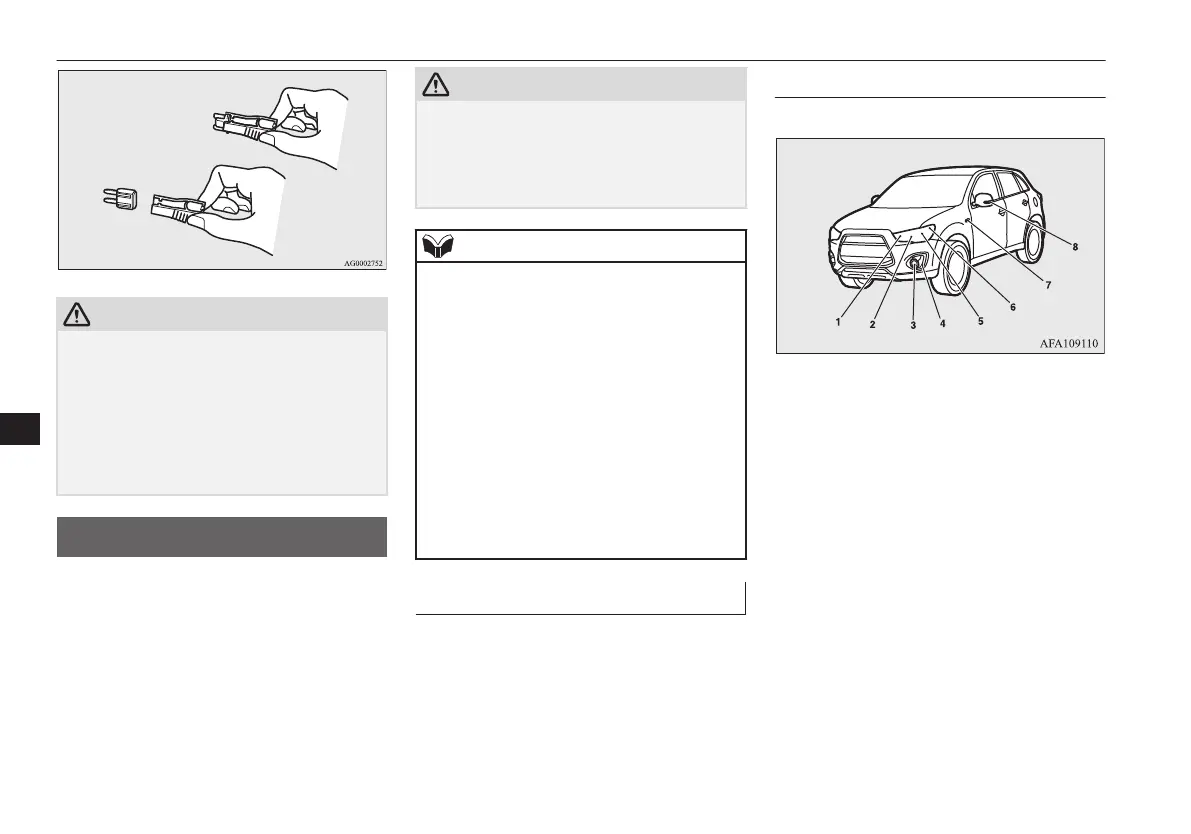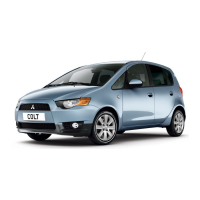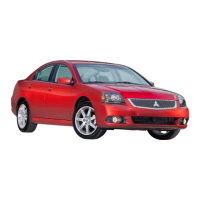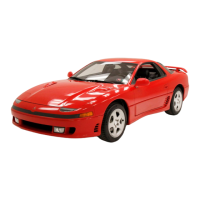CAUTION
l
If the newly inserted fuse blows again after a
short time, we recommend you to have the
electrical system checked to find the cause
and rectify it.
l
Never use a fuse with a larger capacity than
specified or a substitute (such as a cable or
foil). Doing so could cause the circuit wires
to overheat and create a fire.
Replacement of lamp bulbs
E01003100488
Before replacing a bulb, ensure the lamp is
off. Do not touch the glass part of the new
bulb with your bare fingers; the skin oil left
on the glass will evaporate when the bulb
gets hot and the vapour will condense on the
reflector and dim the surface.
CAUTION
l
Bulbs are extremely hot immediately after
being turned off.
When replacing a bulb, wait for it to cool
sufficiently before touching it. You could
otherwise be burnt.
NOTE
l
If you are unsure of how to carry out the
work as required, we recommend you to
consult a specialist.
l
Be careful not to scratch the vehicle body
when removing a lamp or lens.
l
When it rains or when the vehicle has been
washed, the inside of the lens sometimes be-
comes foggy. This is the same phenomenon
as when window glass mists up on a humid
day, and does not indicate a functional prob-
lem.
When the lamp is switched on, the heat will
remove the fog. However, if water gathers
inside the lamp, we recommend you to have
the lamp checked.
Bulb capacity
E01003200290
When replacing a bulb, use a new bulb with
the same wattage and colour.
Outside
E01003304231
1- Front turn-signal lamps: 21 W
(WY21W)
2- Headlamps, high-beam: 60 W (HB3)
3- Type 1
Front fog lamps: 35 W (H8)
Daytime running lamps (type 1)
*1
:
13 W (P13W)
Type 2
Front fog lamps: 55 W (H11)
4-
Daytime running lamps (type 2)
*1
Position lamps (type 2)
*1
5- Headlamps, low beam
Halogen: 55 W (H11)
High intensity discharge
*2
: 35 W
6-
Position lamps (type 1)
*1
: 5 W (W5W)
7-
Side turn-signal lamps (on fender)
*1
,
*2
:
5 W
Replacement of lamp bulbs
10-26
OGAE15E5
Maintenance
10

